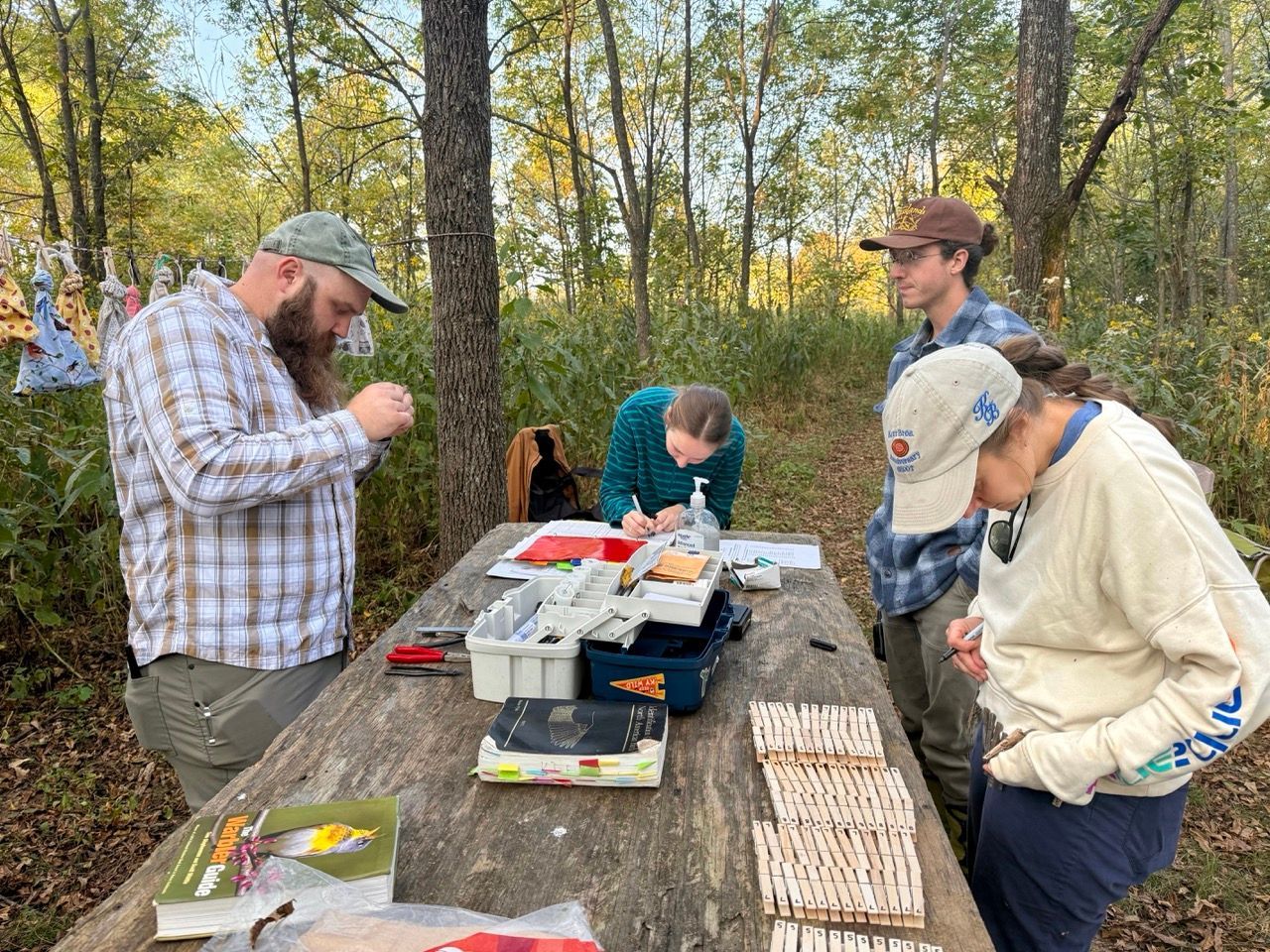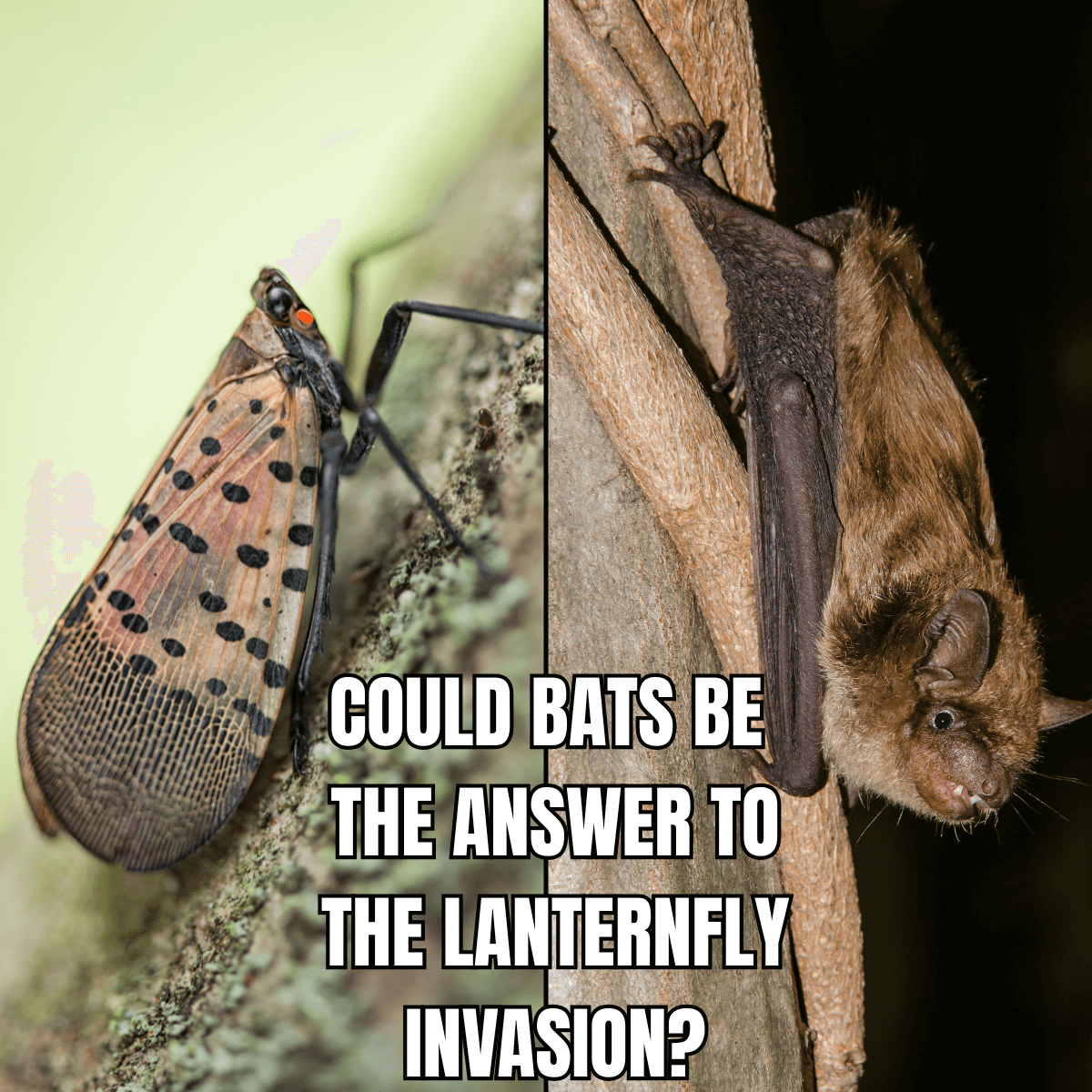Volant Volunteers at MAPS Stations to Support Avian Conservation
September 25, 2025
At Volant, our commitment to ecological stewardship goes beyond consulting—it’s a personal and professional passion. Recently, our co-founders took that commitment into the field by volunteering at Monitoring Avian Productivity and Survivorship (MAPS) stations, contributing to one of North America’s most important long-term bird monitoring programs.
Dan Cox participated at the MAPS station located at Shaker Village of Pleasant Hill in Kentucky, while Mary Gilmore volunteered at the station in Cuyahoga Valley National Park in Ohio. These experiences allowed us to engage directly with the science that informs conservation strategies and deepened our connection to the ecosystems we work to protect.
What Are MAPS Stations?
MAPS stations are part of a continent-wide network established by the Institute for Bird Populations (IBP). These stations operate during the breeding season and use standardized mist-netting and banding protocols to collect data on bird demographics—such as age, sex, and reproductive status. The goal is to monitor trends in avian productivity and survivorship, which are critical indicators of ecosystem health.
Why MAPS Matters
Birds are excellent bioindicators. Changes in their populations often reflect broader environmental shifts, including habitat loss, climate change, and pollution. MAPS data helps scientists and land managers understand these changes and develop informed conservation strategies. The program has been instrumental in identifying population declines and guiding habitat restoration efforts across North America.
Why Volant Participates
As ecologists, we rely on robust data to inform our work. Volunteering at MAPS stations allows us to contribute to the very datasets that shape conservation policy and practice. It also keeps us grounded in the fieldwork that underpins our consulting services. Participating in MAPS aligns with our mission to support science-based environmental solutions and gives us a chance to collaborate with other professionals and volunteers who share our passion for wildlife conservation.
Moreover, these experiences enrich our understanding of the landscapes we serve. Whether it’s the rolling hills of Kentucky or the forested valleys of Northeast Ohio, each MAPS station offers a unique glimpse into the local avian community and the broader ecological dynamics at play.
Looking Ahead
We’re proud to support MAPS and encourage others in the environmental sector to get involved. Whether through volunteering, funding, or simply spreading awareness, every contribution helps strengthen the scientific foundation of conservation.
Stay tuned for more field stories and insights from our team as we continue to engage with the ecosystems we serve—both professionally and personally.


The spotted lanternfly ( Lycorma delicatula ) has become one of the most notorious invasive species threatening forests, agriculture, and ecosystems across the eastern United States. As this insect rapidly expands its range, land managers and researchers are urgently seeking natural solutions to control its spread. A new study published in Forests (MDPI, 2023) offers a hopeful — and surprising — potential ally in the fight: bats. The Spotted Lanternfly Problem Originally from Asia, the spotted lanternfly was first detected in Pennsylvania in 2014 and has since spread across the Northeast and Mid-Atlantic. Its preferred host, the invasive tree of heaven ( Ailanthus altissima ), is common along roadsides, forest edges, and disturbed habitats — making containment especially difficult. These insects cause extensive damage by feeding on sap from trees and plants, weakening them and leaving behind a sticky residue that promotes mold growth. The economic impacts are significant, affecting vineyards, orchards, timber, and even tourism. Bats as Natural Pest Control Recent research reviewed global studies on forest-dwelling bats and highlighted emerging evidence that some native bat species may be consuming spotted lanternflies. This is promising news for several reasons: -Bats are voracious insect predators, capable of eating thousands of insects in a single night. -Utilizing native species for pest control reduces reliance on pesticides and promotes ecosystem balance. -Bats often forage along forest edges, roadsides, and near water — the same areas where spotted lanternflies tend to congregate. While more targeted research is needed to fully understand the extent of bat predation on lanternflies, early findings suggest that enhancing bat habitat could be part of an integrated pest management strategy. Supporting Bats, Supporting Forest Health At Volant EcoServices, we specialize in bat research and habitat assessments. Protecting and enhancing bat populations isn’t just good for biodiversity — it may also provide tangible benefits in controlling invasive pests like the spotted lanternfly. We assist clients with: -Acoustic monitoring to document bat activity -Roost surveys and habitat evaluations -Conservation planning that promotes healthy bat populations As this research evolves, we’re optimistic about the role native wildlife can play in restoring balance to our forests. Interested in learning more? Read the full article here or contact us to discuss how our bat expertise can support your conservation or land management goals.

